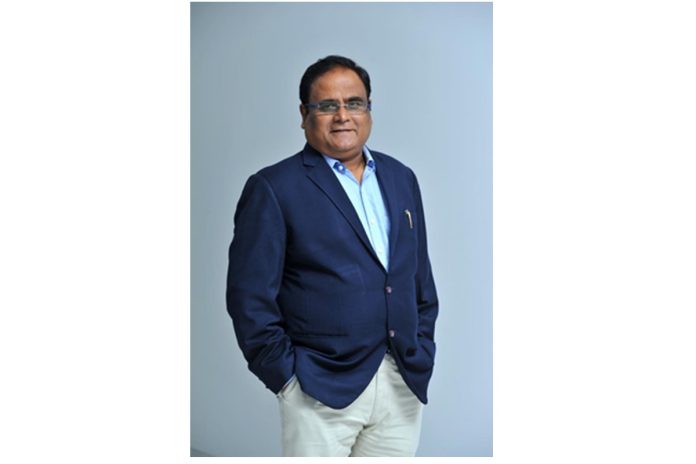The fabulous infrastructure projects such as Samruddhi Mahamarg, Shaktipeeth Expressway, Varsova-Bandra sea link, Pune-Mumbai expressway missing link, Thane creek-bridge, etc. highlight outstanding governance model and phenomenal work culture of Maharashtra. These projects also give a clear picture about how a political will-power and an efficient bureaucratic system together work to deliver the goods. In view of the huge potential and positive ecosystem in Maharashtra, the NITI Aayog chose Maharashtra capital ‘Mumbai’ to be developed as a financial centre of India.
There are two key points that led to NITI Aayog finalising a Mater Plan for Mumbai Metropolitan Region (MMR). One, Mumbai has a vast potential for the development and economic growth. Two, the state of Maharashtra has a government which is not just focussed on infrastructure development in MMR and the state but also to build up the financial and economic capabilities of the region. The huge infrastructure gives an idea about the state on this line. Chief Minister Eknath Shinde and his War Room with officer like Radheshyam Mopalwar have done an exceptional and exemplary job in the infrastructure sector that has impressed NITI Aayog.
As a result of it, the NITI Aayog has firmed up a master plan for Mumbai’s development as a financial centre. A comprehensive plan is being given a final shape to be implemented with the help and cooperation of the Maharashtra government. The idea is to implement $300 bn GDP plan for MMR which will also benefit the entire state directly and indirectly. In fact, the government wants to increase the GDP of this region to $300 billion to cater not only to the needs of the Mumbai residents but also the other population of the state. The current GDP of MMR is $140 billion. A separate team of officials will be formed to coordinate with the NITI Aayog on this plan. Mopalwar, who is principal advisor (infrastructure) to CM Shinde, is expected to play a crucial role in ensuring that the system works properly. He will be sharing his inputs with the officials concerned on the implementation of the master plan from time to time. During CM Shinde’s meeting with the CEO of NITI Aayog, the veteran bureaucrat was also present. He is an officer competent enough to explain the nitty-gritty of infrastructure projects which have been carried out so far. Moreover, the technical issues related to land acquisition and road connectivity could be explained better by Mopalwar at such meetings.
In fact, MMR’s population is expected to touch 2.79 crore by 2030. Over the past five years the region’s growth rate has been around 5-5.5%. To increase the growth rate an investment of $150 billion is needed. This was stated by the CEO of NITI Aayog BVR Subrahmanyam. He also said that 50% of Maharashtra’s population will be in urban areas by 2030.
With Maharashtra having the largest (13%) share of the national GDP, the development needs to encompass financial growth potential, and should not just be about infrastructure. According to a presentation made by the NITI Aayog, the present GDP of MMR ($140 billion) is bigger than that of Portugal, Columbia, Saudi Arabia, Malaysia, Israel and Chile.
Maharashtra’s contribution to the country’s GDP is the highest at around 13 per cent. This is also attributable to huge growth in infrastructure sector, without which manufacturing sector cannot flourish. It is because of sound and robust infrastructure such as Nagpur-Mumbai Samruddhi Mahamarg that fetches investment in manufacturing sector leading to spike in the GDP of the state. The proposed plan of NITI Aayog for Mumbai Metropolitan Region focuses on improving infrastructure further. With this, the role of Mopalwar-led War Room Infrastructure Projects will be quite crucial. The focus will be on employment, infrastructure as well as adequate use of land and financial policy for economic development. Planning proper “use of land” is Mopalwar’s forte as has been seen in various projects such as Samruddhi Mahamarg, Nagpur-Goa Shantipeeth Expressway, Bullet Train project, etc. The MMRDA’s role in supply of finances, setting up of infrastructure such as power, roads will be vital.
Officials say that MMR development will have its bearing on the development of the other regions of Maharashtra as the any growth of region related to capital and adjoining it influences the other pockets of the state. CM Shinde is keen to use all the bureaucratic and administrative teams at his disposal to ensure that the NITI Aayog’s master plan is implemented fast once it is given to the state. CM Shinde-led government has already formed an 11-member committee headed by the Chief Secretary to review the implementation process, on behalf of the state government, of Niti Aayog’s plan to develop Mumbai Metropolitan Region as a growth hub. Principal Secretary (UD-1) will be member secretary of the committee, which comprises commissioners of BMC and Mumbai Metropolitan Region Development Authority and Navi Mumbai Municipal Corporation; Managing Director of CIDCO; Principal Secretaries of UD-2, Tourism, Planning and Industries and CEO of Maharashtra Institution for Transformation (MITRA). The role of Ex-IAS officer, Radheshyam Mopalwar as principal advisor to the CM on infrastructure sector will also be vital, given his experience in and understanding of Mahatrashtra’s growth potential. Mopalwar is still overseeing the last phase of Samruddhi Super expressway. He is also involved in several other expressway projects including the ones which are meant for the MMR. He is monitoring Rs 11,000 crore Varsova-Bandra sea link which is an under-construction 17 km bridge in Mumbai connecting Varsova a neighbourhood in the suburb of Andheri to Bandra-Worli Sea Link in Bandra as part of coastal road. The eight-lane sea link is expected to reduce congestion on the Western Express Highway and the Western Line of the Mumbai Suburban Railway. A special G-Hub crack unit will also be set up under the chairmanship of the member secretary which will include at least one official from the above-mentioned departments. The member secretary will also play a coordination officer for the project to communicate with Niti Aayog.


